When Rough-legged Hawks dive on prey on the ground they typically hover first and then drop down vertically and fairly slowly. But occasionally they come in fast and at an angle and when they do they can appear to hit the ground so hard they vicariously rattle my teeth and I almost expect them to bounce on impact.
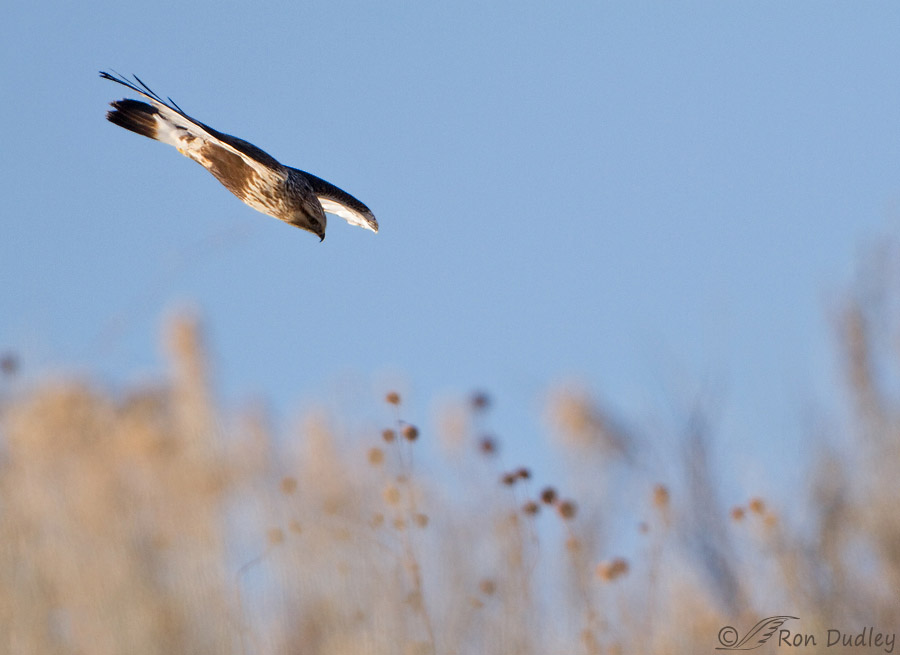 1/2000, f/7.1, ISO 500, Canon 7D, Canon EF 500mm f/4L IS II USM + EF 1.4 III Extender, not baited, set up or called in
1/2000, f/7.1, ISO 500, Canon 7D, Canon EF 500mm f/4L IS II USM + EF 1.4 III Extender, not baited, set up or called in
This one combined the two methods by hovering first and then diving fast at an angle. Here (s)he is still traveling at a good clip even this close to the ground. Because of all the obstructing vegetation I didn’t see him make impact but his technique was effective because he soon came up with a vole.
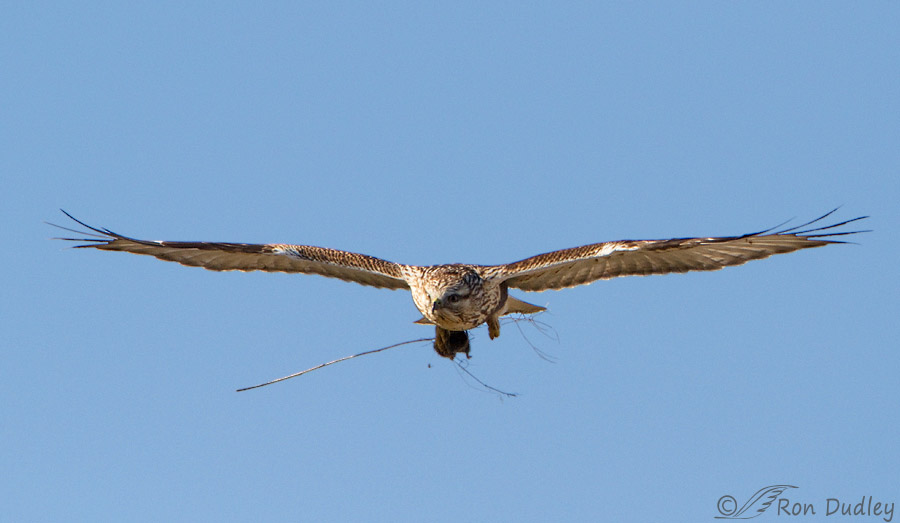 1/2000, f/7.1, ISO 500, Canon 7D, Canon EF 500mm f/4L IS II USM + EF 1.4 III Extender, not baited, set up or called in
1/2000, f/7.1, ISO 500, Canon 7D, Canon EF 500mm f/4L IS II USM + EF 1.4 III Extender, not baited, set up or called in
As they often do he also had some debris in his talons along with the vole. He came out of the grasses flying toward me before turning to his left to give me a side view.
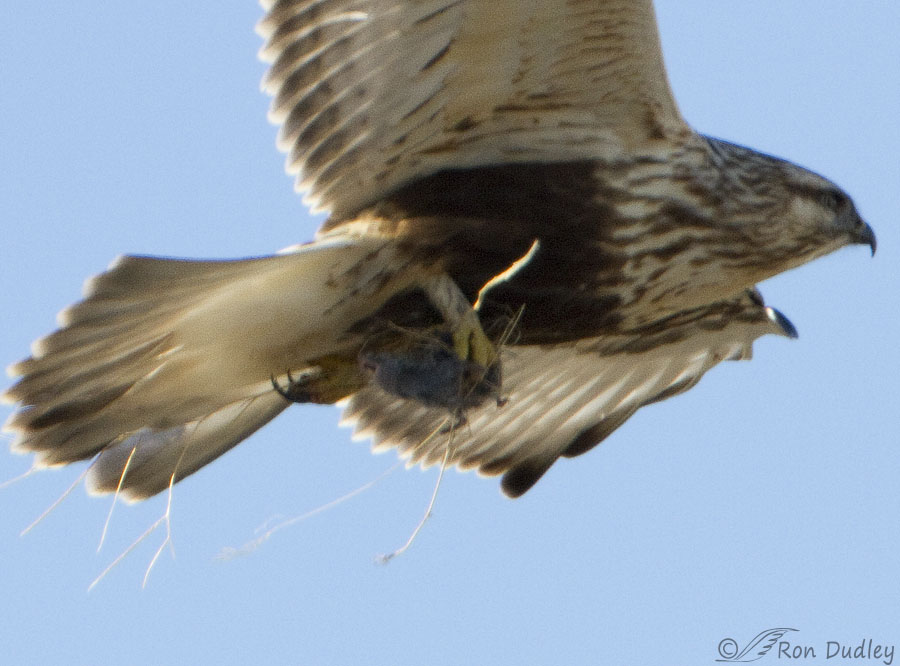 1/1250, f/7.1, ISO 500, Canon 7D, Canon EF 500mm f/4L IS II USM + EF 1.4 III Extender, not baited, set up or called in
1/1250, f/7.1, ISO 500, Canon 7D, Canon EF 500mm f/4L IS II USM + EF 1.4 III Extender, not baited, set up or called in
Soon after he turned to his left there was obviously something going on with that feisty vole. The hawk is holding the vole as gingerly as possible with only its talons exposed to and imbedded in the rodent and the rest of its foot and leg are being held at an angle with as little exposure to the vole and injury as possible. I wish I hadn’t lost focus in this shot so we could see more clearly what the vole is doing but it appears to me that it might be biting, or attempting to bite, the hawk’s left foot.
The bird reacted very quickly.
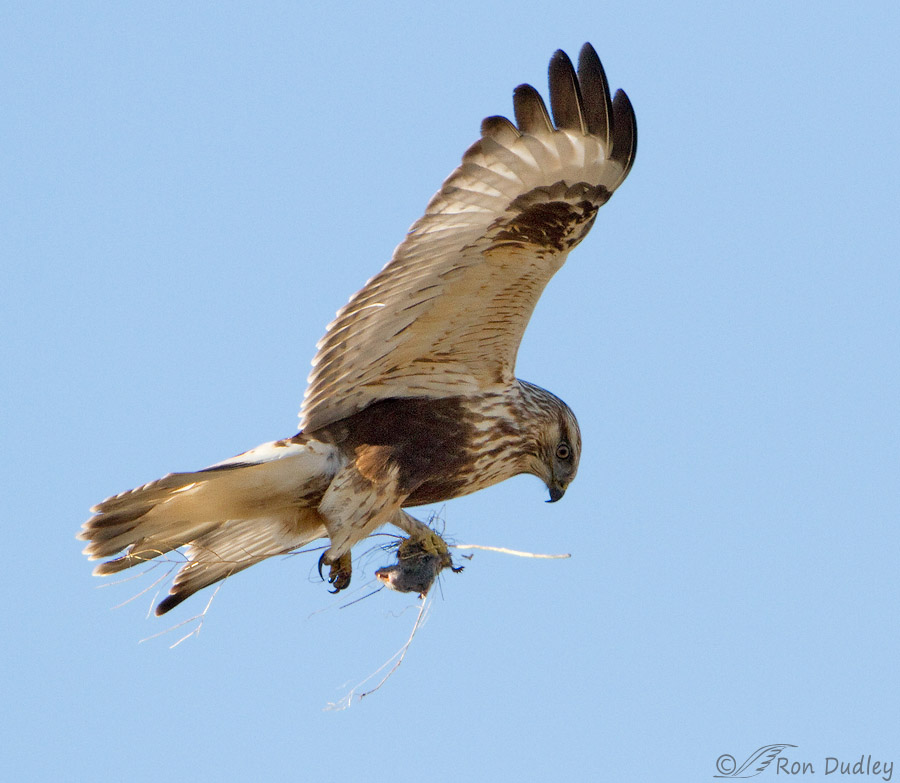 1/1600, f/7.1, ISO 500, Canon 7D, Canon EF 500mm f/4L IS II USM + EF 1.4 III Extender, not baited, set up or called in
1/1600, f/7.1, ISO 500, Canon 7D, Canon EF 500mm f/4L IS II USM + EF 1.4 III Extender, not baited, set up or called in
By the very next frame in the burst the hawk had moved the vole away from its left foot and was looking down at it. That little rodent had a bucket-full of attitude and was obviously still trying to bite the left foot. The vole’s mouth is wide open and those mean little rodent teeth are ready for action. This is one little rodent that was determined to avoid going down without a fight.
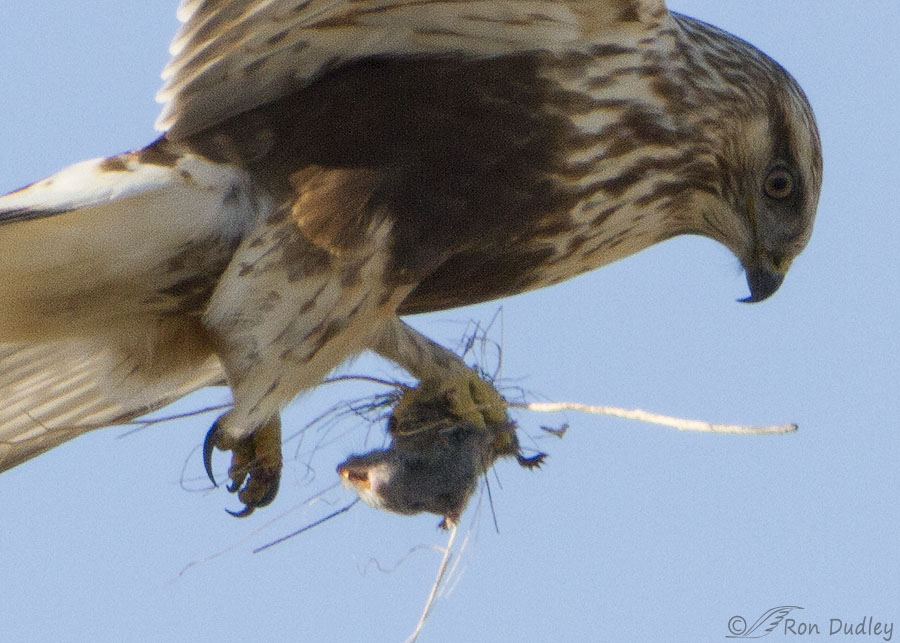
A tighter crop on the previous image shows the action a little better.
This series doesn’t offer absolute proof that the vole bit the hawk but I’d bet the farm that it happened at least once. I’ve often wondered how common it is for raptors to “feel the pain” from their rodent prey. Several times in the past I’ve seen Northern Harriers drop voles after being airborne and wondered if it had been done deliberately because they’d been bitten.
This hawk didn’t drop the vole but it certainly reacted to the apparent bite.
Ron
Notes:
- Seven years ago I posted three of these images and tried to explain what I thought was going on. But I’m not treating this version as a “rerun” of that post because two of the images and most of the text are new to my blog.
- When I published that original post seven years ago HawkWatch International board member and tireless warrior for raptors Mike Shaw made the following comment regarding injuries he’d seen on raptor legs and feet: “It’s always fascinating to examine their legs and feet: scabs, bruises, callouses, scars of various ages, gnarly twisted toes, missing talons, calcified bumps from prior injuries, pine pitch, blood, fur and feather remains*, etc. all tell the story of a bird’s daily mission to keep itself fed. Rare to see it caught through a lens as it happens!
We recently banded a female Sharpie that had a chipmunk tail impaled on a talon and fresh bite marks on both legs. A bulging crop seemed to indicate that she didn’t drop her meal.”


Awesome capture Ron !!
Thank you, Tjie.
Great shot! That vole wants to live. Yes their feet are usually battle scared, some even missing parts of toes.
Thanks, April.
Nature is a life and death struggle and and every prey will fight to stay alive. Great series and it sure does look like the vole got him. Interesting to read Mike Shaw’s comments as well. One of our eagles here has a broken off talon.
Everett Sanborn, Prescott AZ
Thanks, Everett. Mike always has interesting things to say when he comments.
Along these same lines, I have several shots of a snake biting at the underside of a red-tailed hawk. The hawk had flown with the snake dangling from it’s mouth at first before transferring to talons. Once situated on a pole to eat, the snake kept trying to bite until eventually subdued. Hope you are doing well!
Interesting about the snake, Bernie. Many raptors seem pretty wary of snakes that are still alive and for good reason. This from Cornell’s Birds of North America Online – “(Bent) “reported an incident where a Red-tail was bitten and killed by a “rattlesnake”, and a Red-tail was found dead with a coral snake”
I once photographed a Red-tailed Hawk that had the poop scared out of it by a headless snake:
https://www.featheredphotography.com/blog/2016/06/26/red-tailed-hawk-seriously-startled-by-a-dead-and-headless-snake/
Hi Ron, bites are (unfortunately) far too common. I falconry birds, we see a lot of bites from packrats and squirrels. Most heal without issue because of good medical care, but it is not uncommon to catch wild hawks with terrible infections, or non-functional toes due to rat and squirrel bites. Surprisingly, rabbits almost never bite, despite the fact that they are well equipped to do so.
That’s fascinating about rabbits, Mark. As a kid I was bitten by pet rabbits more than once. Fairly nasty bits too…
Nice set! Sometimes ‘you have to work for your food’. I’m sure bites by those sharp little teeth have got to hurt and a lesson is learned quickly. What amazes me is the determination both use…I’ve seen a few voles jump at the hawk hoping against hope I’m sure for a few moments reprieve and perhaps escape. I’ve been seeing a great deal of RoughLegged Hawks these days. When I see one hovering, it is always worth stopping to watch the search and hunt. Sometimes its not as easy for the hawk as one would expect.
Kathy, harriers are the raptor species I see most often struggling with rodent prey. They often dance around on the ground stabbing at voles with their feet. Usually I can’t actually see the vole but it’s obvious what’s going on.
Great action capture, Ron. I’d bet money it got bitten also with it’s reaction! Vole probably not even thinking about the fall if it did happen to let go! 😉 Most creatures are going to fight to the death to remain alive including humans! Glad the HawkWatch Int’l board member commented on the types of injuries they sustain – don’t always think about it! At the moment I’m still torn between feeding the pheasants a bit given all the hawks “hanging around”. The hawks did leave for awhile yesterday afternoon so pheasants came in for some grub – “food chain” kind of “in your face” with all the snow of late! Intellectually knowing it and observing it are 2 different things! 😉
“Intellectually knowing it and observing it are 2 different things!”
It sure can be, Joseph. Some of it can be hard to watch.
I always appreciate Mike’s comments and observations. When it comes to raptors he really knows his stuff.
Really Judy – clicked wrong signature…….. 😉
I wondered…